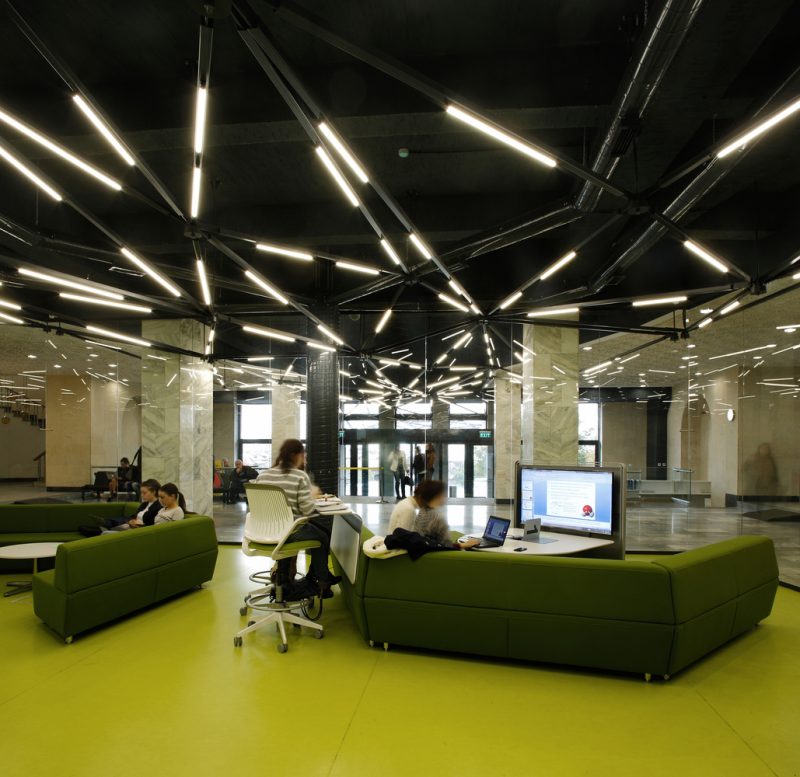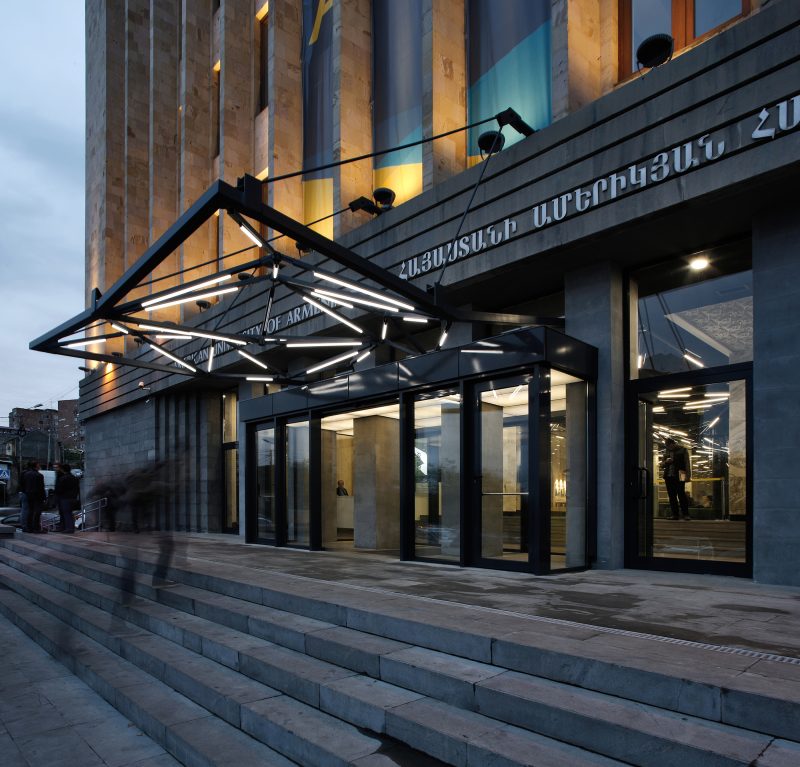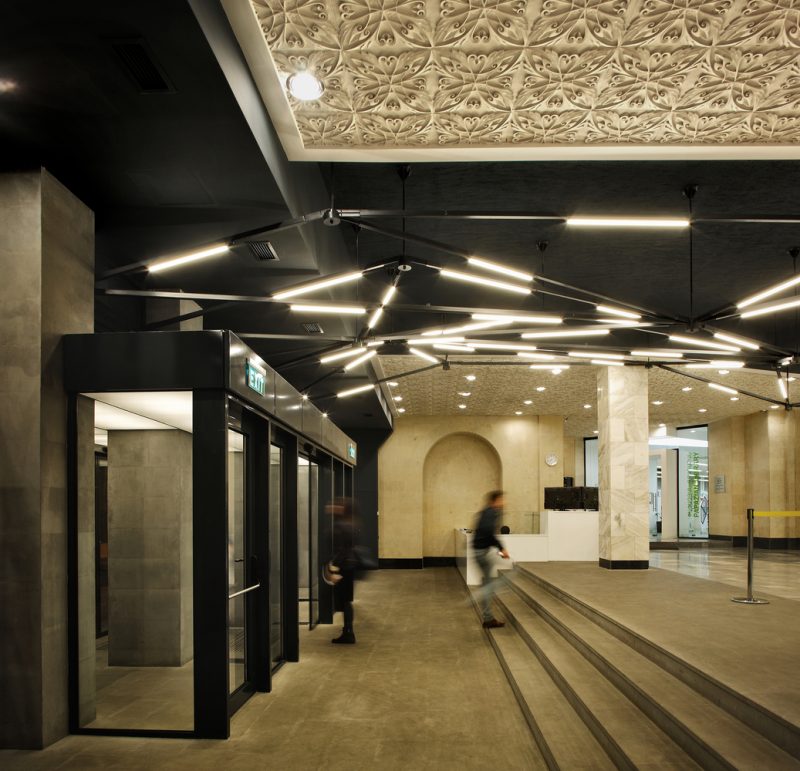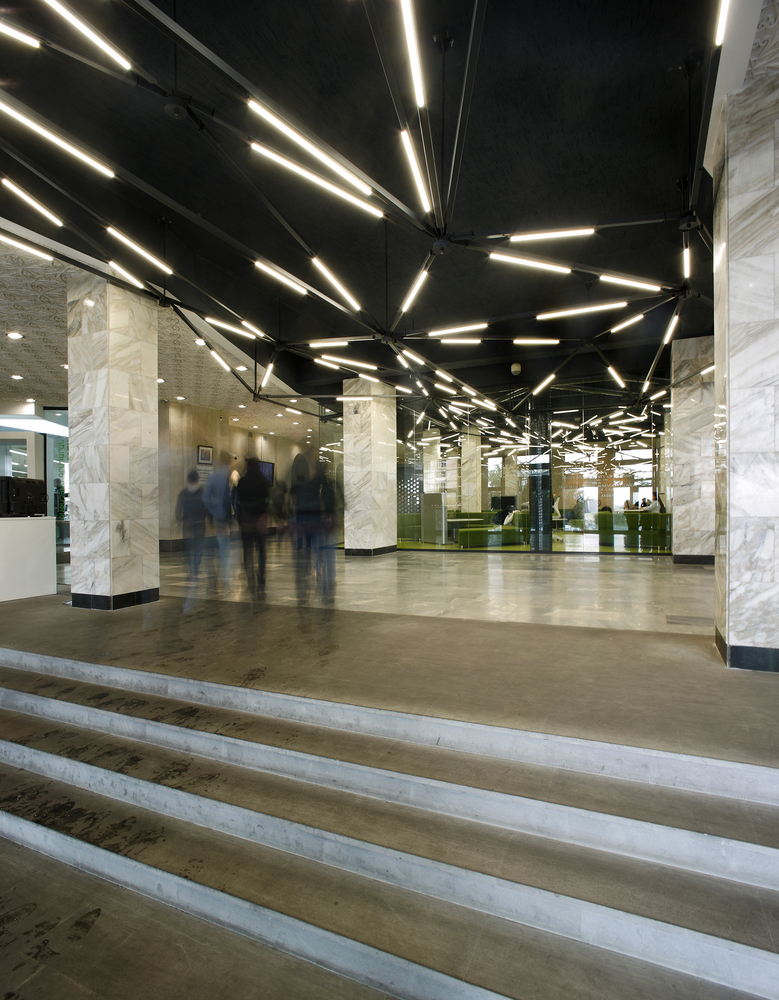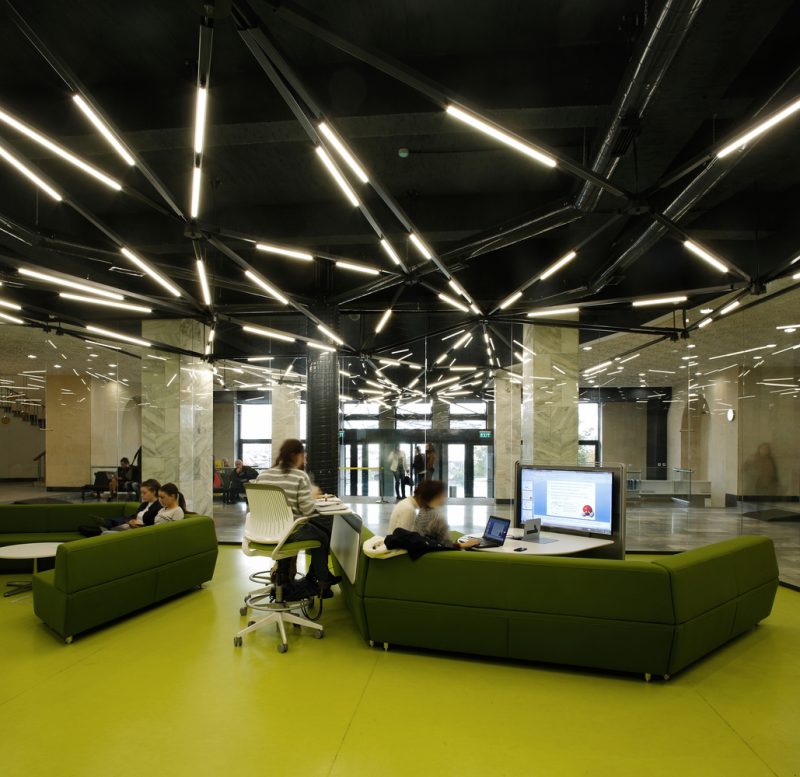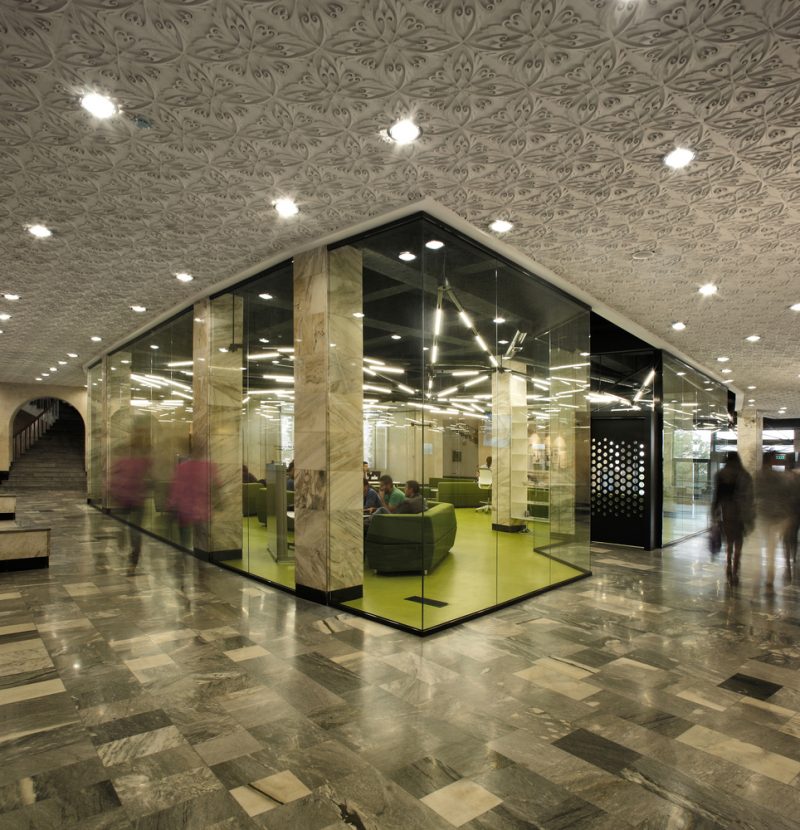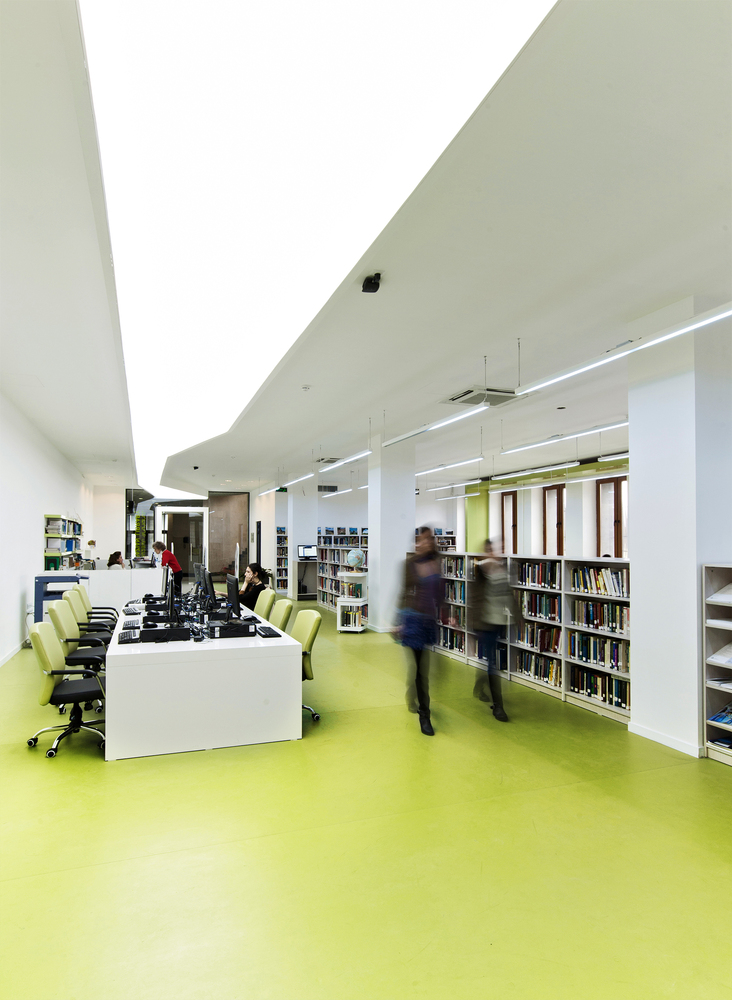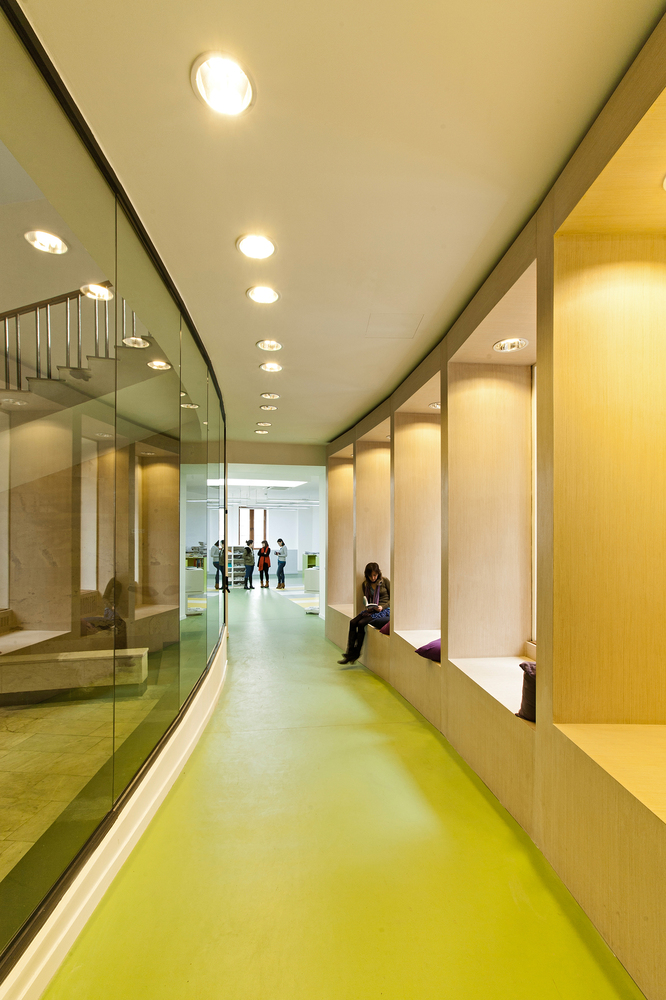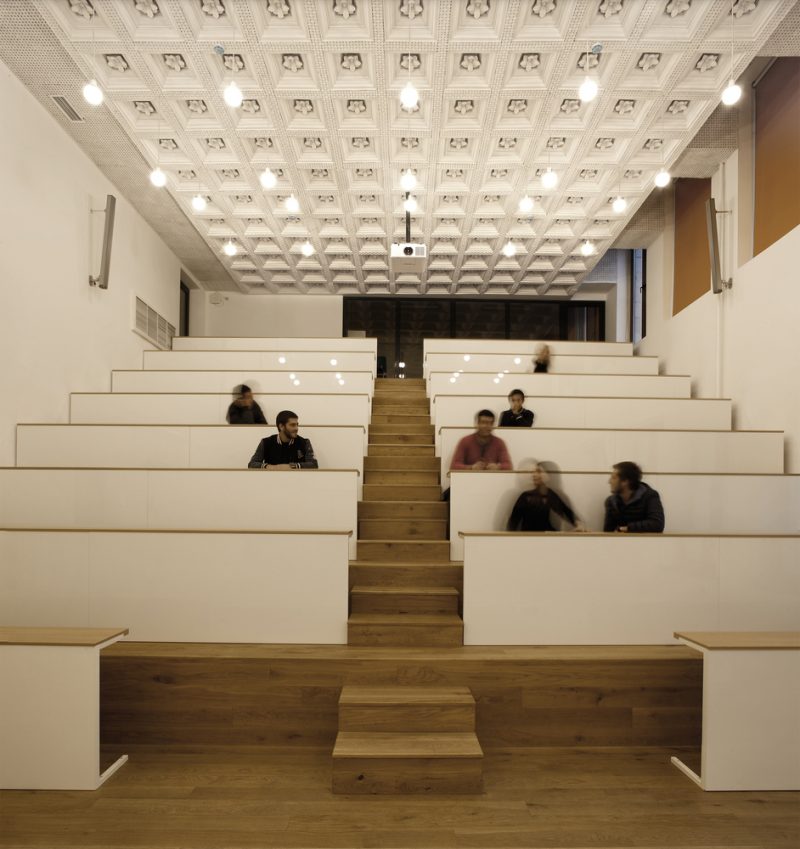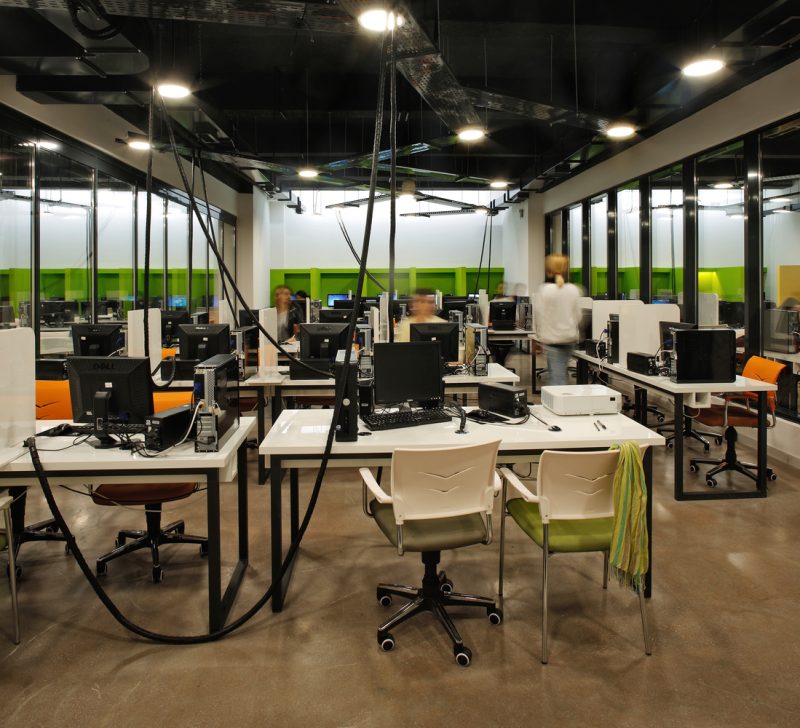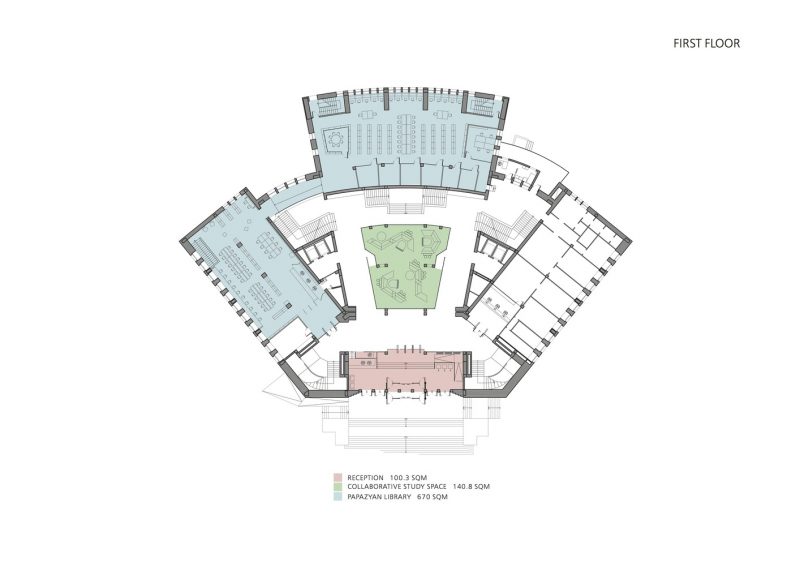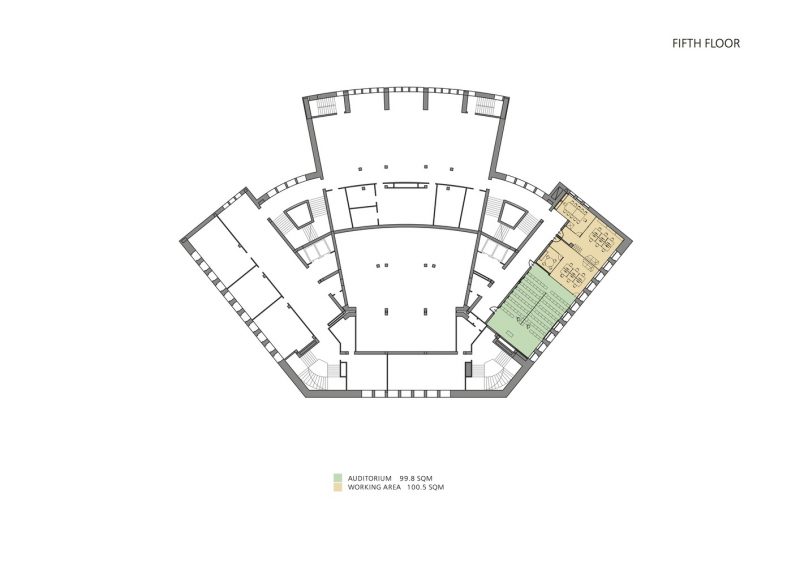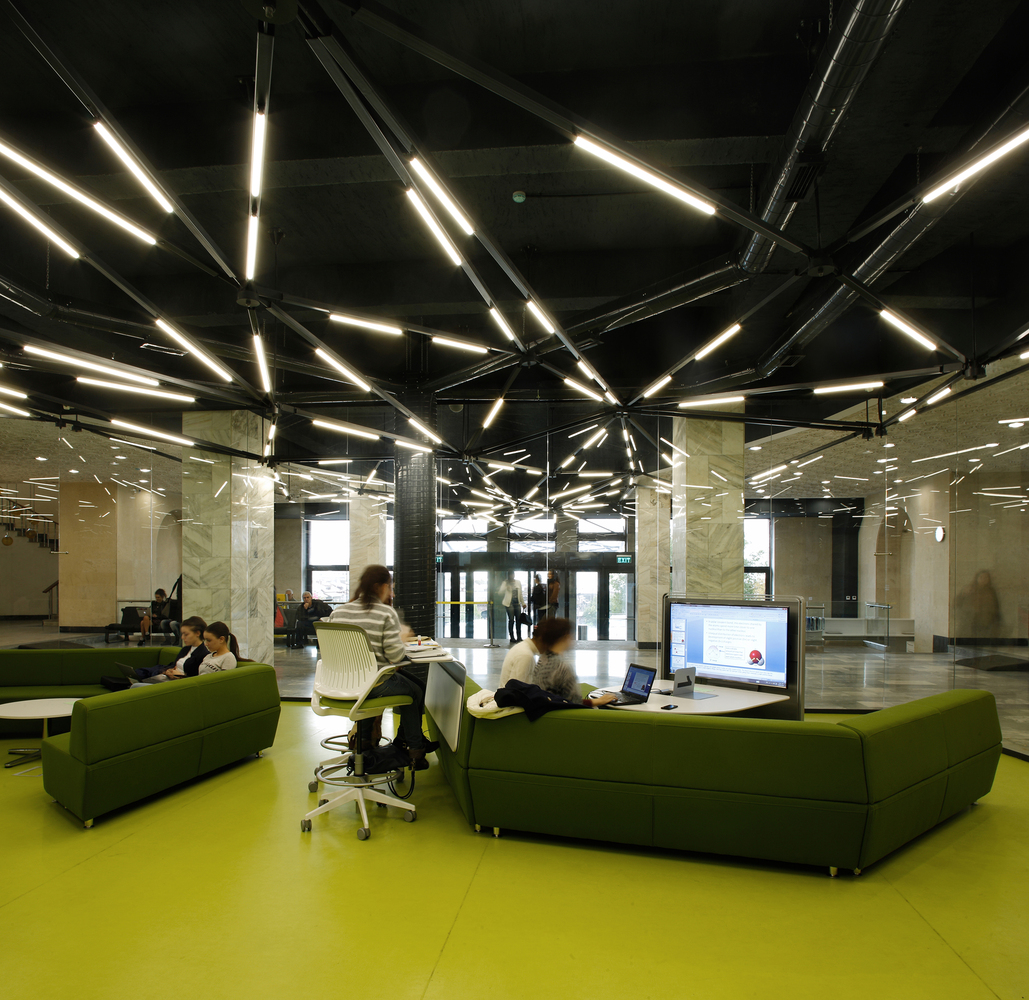
American University of Armenia Renovation / Storaket Architectural Studio
2 min read- Architects – Storaket Architectural Studio
- Location -Yerevan, Armenia
- Design Team – Meroujan Minassian, Narbeh Bedrossian, Sona Manukyan, Ani Sahakyan, Anoush Karapetyan, Talin Gabounian
- Area – 1730.0 m2
- Project Year – 2016
- Photographs – Sona Manukyan & Ani Avagyan , Artashes Martirosyan
- Manufacturers – Steelcase, Bosch, Gerflor
From the architect. The old building of the American University of Armenia (AUA) in Yerevan was built in 1979, by two of the most prominent Armenian architects of the time, Mark Grigoryan and Henrik Arakelyan. The building, that has a symmetric triangular shape, is made of felsic tuff on basalt basis. Narrow rectangular niches are regularly arranged on three surfaces at the full height of the building. This approach, in combination with light colored facade, alleviates the building’s character despites its massiveness.
The American University of Armenia’s educational standards and philosophy have distinguished it as one of the top universities in Armenia, and this renovation project serves as a testimony of the university’s culture of transparency, innovation, and academic commitment. The open structure allows students to exchange energy and encourages development of campus culture. Through the renovation project, an interior was created, where the old (Soviet era architecture) and the modern meet each other and create a reciprocal harmony.
Renovation includes the following areas: Papazian Library, Collaborative Study Space, Test Center, Innovation Lab, Auditorium and the Working Area.
The library was expanded at the expense of the area formerly used as a kitchen, now fitting extra reading and study spaces. This has also provided increased number of outlets and surfaces for computers.
The Collaborative Student Center is located in the center of the lobby. Transparency and light was added to the interiors by using glass and lighting fixtures. A new lighting scheme begins from the facade of the building and continues inside of the entrance and lobby area, creating a welcoming motion. The original gypsum ceilings and floor finishing was preserved to emphasize the rich history of the building.
The aim of renovating the testing space was to create a transformable area, where folding partitions provide varied possibilities to create larger and smaller spaces according to need.
The Innovation Lab is a combination of two rooms, one dedicated to technical tests and the other for innovation, scientific meetings and discussions.
The Auditorium now serves as lecture hall with a semi-transparent back office and working area. Based on the requirements, a second level was added to create additional space.
Product Description. Steelcase, media scape Furniture. Effective collaboration — informational, evaluative, generative — depends on equal access to both analog and digital information, a seat at the table and a view of the screen for each participant, and the ability for every user, no matter where they’re located, to join in the collaborative process.
Media scape thoughtfully integrates technology, furniture and space with the organization’s existing infrastructure, to foster greater collaboration and workplace connection than ever before.

